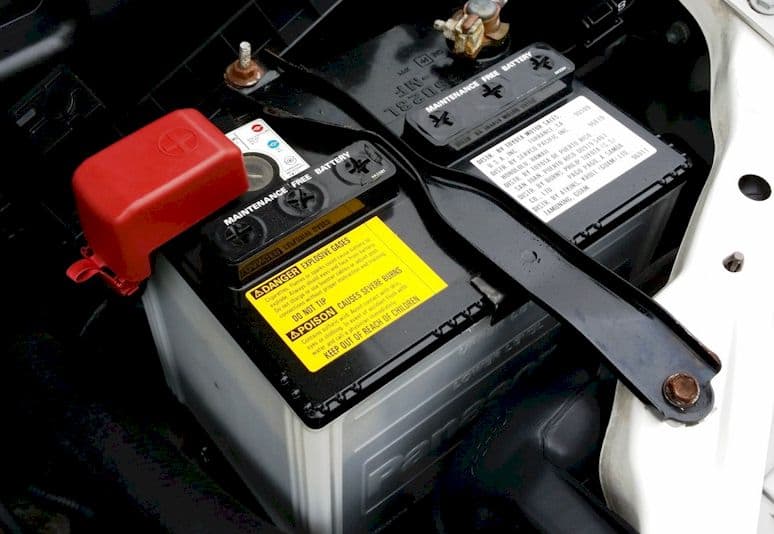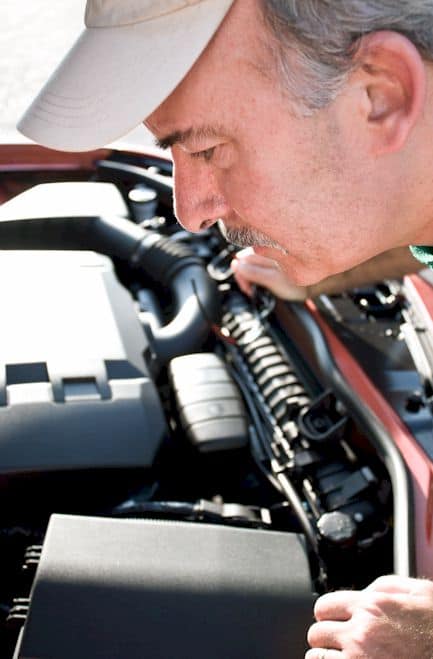A car battery is very important to have a smooth and safe driving experience. Once the battery weakens, you will notice that your car becomes sluggish and slower. There are instances that you need to jumpstart your vehicle because your battery just can’t start right away. Follow this ultimate guide on how to charge a car battery using your car battery charger.
Why Car Batteries Do Go Flat?
There are many reasons for batteries to go flat or lose charge. Basically, a car battery is only used to crank the engine. But like most batteries, once it reaches the end of its lifespan, it loses its capability to hold its charge and will often go dead. Other factors can also shorten the life batteries:
Two things are required to charge a car battery; a voltage source powerful enough to move current through battery, and time. The more current you push into a car battery, the faster you can charge it. However, charging a battery at too high a rate can lead to overheating.
The time/rate a car battery recharges depends on many factors, like if the battery is cold. Check the temperature of the battery during charging. Once gets too hot, stop charging and continue when it cools down.

Preparing to Charge
- If it is needed to take the battery away from the car to recharge it, make sure to remove the negative or grounded terminal first. You also need to ensure all car accessories like radio and lights are off to avoid arcing.
- Make certain the area surrounding the battery is well-ventilated while it is being charged.
- Clean the terminals of the battery before charging. During cleaning, use a mask to avoid inhaling airborne rust. Use water and baking soda to defuse battery acid. It also helps get rid of airborne corrosion. Avoid touching your nose, mouth and eyes to prevent irritation.
- Pour water into every cell until the acid of the battery reaches the specified level by the manufacturer. Don’t overfill. If your battery doesn’t have cell caps, follow carefully the recharging instructions provided by the battery manufacturer.
- Read carefully and follow the guides for the battery, charger car and any tools utilized near the battery and charger. Understand the manufacturer’s specific safety measures while charging and follow the suggested charge rates.
- Know the voltage of the car battery through referring to the vehicle manual and make certain that the switch of the output voltage selector is in the right voltage. In case your charger is equipped with an adjustable charge rate, charge first the battery starting with the lowest rate.
- To be sure the charge cable clips make light connection.
Car Battery Charger Location
Put the charger as far away from the car battery as the DC wires permit.
Avoid placing the charger above the battery being charged; gas from the car battery will damage and corrode the charger.

Avoid putting the car battery on top of the charger. Don’t let the acid of the battery to drip onto the car battery charger when filling the batter. Don’t operate your car battery charger in a confined space.
DC Cables Safety Measures
Connect and detach the DC output clips after the charger turns off and remove AC plug from the outlet.
Make sure the clips don’t touch each other. Connect the clips to the chassis and battery.
How to Charge a Battery When It is installed in the Car?
A spark near your car battery may lead to the explosion of the battery. To avoid this from happening:
• Steer clear of belts, fan blades, pulleys as well as other components that can cause damage.
• Check the polarity of the car battery posts.
These will likely have a mark and are usually color-coded. In some applications, the positive post is bigger than the negative post.
• For a NEG-grounded car, connect the RED or POS clip from the charger to the POS underground post of your battery. Connect the black clip to the car chassis, make sure it is away from the battery.
Avoid connecting the clip to the fuel line, carburetor and sheet metal parts. Connect to heavy gauge metal portion of the engine block.
• As you hook the red clip to the positive line and the black one to the negative line. Next step is to choose the type of battery by pushing the button that indicates the type of battery of your car.
There are three choices: The standard, the GEL and the AGM.
Push the “standard” button if your car is an everyday vehicle, since by “standard”, we mean the regular battery that is in most cars that ordinary people use, as opposed to high-performance vehicles and those used in marine applications.
After choosing the battery type, you go to the next step, which is selecting your charge rate. You have options such as 85AMPS and 30AMPS. The 85AMPS is for just for jump-starting, while, if you use the 30 AMPS, it means that you intend to charge your battery very fast. Only you need to be cautious when you're charging at this rate as if it takes too long; you might burn your battery. Two-and-a-half hours to two hours is the maximum charge time at this rate. ( Read the the ultimate review of
The lowest amperage there is for car battery chargers is 2AMPS, which many people say is the safest setting. Now this option will require a longer time to charge the battery, but mechanics attest, this is the best setting by far.
• When detaching the car battery charger, make sure all the switches are turned off, disconnect the AC wires, get rid of the clip from the chassis of your car and then take away the clip from the terminal of the battery.
If you have an older (vintage by today’s standards) car, you may need to verify if your vehicle is running a Positive-ground or Negative-ground electrical system. The easiest way to check is to follow the leads from the battery and determine which one is directly connected to the chassis.
• For a POS-grounded car, connect the black clip from your charger to the NEG underground post of your battery.
Connect the red clip to the chassis, away from the battery. You also need to avoid connecting the clip to sheet metal body parts, fuel lines or carburetor.
Car Battery Charging Time
Charging a car battery overnight? Normally, if the voltage of your battery is below 11.85 and the charge is putting out a 5-amp charge rate, then it will take about 12 hours to fully charge your battery with 400 to 500 cold cranking amps. If the battery has ten amps charge rate, it will take six hours to fully charge. When the battery has low open-circuit voltage, it will take 12 hours or more to fully charge.
How Long to Charge a Car Battery at 50 Amps?
Let’s go ahead and discuss charging at this specific amperage. So, how long do you charge your battery at 50 AMPS?
It depends, considering different factors that include battery size, the level of charge left and the rating your battery has. For the last item, which is the battery rating, know the CCA and RA ratings of your battery.
CCA is short for Cold Cranking Amps, the rating that refers to the ability of the battery to start an engine in cold temperatures.
Specifically, it refers to the number of amps the battery can deliver at this specific condition: 0oF, 7.2 volts for 30 seconds.

The Reserve Capacity (RC) is the number of minutes a battery at 80°F can discharge 25 amps until the battery falls below 10.5 volts.
The CCA and the RC ratings are size-related. For example, a small battery rates at 200-315 CCA and RC 40-60, while a large-sized one has these ratings: 550-1,000 CCA and RC 85-190.
For full charging at 50AMPS, a small battery needs to be charged for 90 minutes, a midsized one for 90 minutes as well, and large batteries for 120 minutes. Cut the time by half of these values if the battery is 50% discharged.
How to Estimate the Charging Time of Your Car Battery
Let's say you want to do it at a different setting other than the 50AMPS rating. The first thing to do is to check your battery's CCA ratings and RH ratings. Find these numbers on the top of your battery. You will also find there an estimate for the charging time of your battery for whether it is still 50% dead or completely dead.

For the estimate below, we will use the setting 1.5AMPS or the AH rate for the charger. The AH (amps per hour), which is the unit used by car battery makers, is the rating that refers to the amount of charge a charger can replenish within a battery for one hour. This does not include inefficiencies. For this estimate, the inefficiency rate we will use is 0.8.
First, we take a 32AH battery. Battery manufacturers say that it takes 13.5 hours for it to be fully charged from 50%. Since this is half-charged, we divide 32 by 2, and get 16AH, which is the amount to be replaced.
Divide that by 0.8 (inefficiency); we get 20AH, which is what is needed to come from the charger.
Divide further by 1.5AMPS which is our AH rate; we arrive at 13.33 hours (rounded off value is 13.5 hours) which is the same charging time indicated at the battery label.
Keep in mind this is applicable only for half-full batteries. For full charging from 0%, just double the resulting figure, and that will be the full-charge time for your battery.
There are factors to consider when doing the calculation for estimation because they have considerable effects on charging time. Limitations include battery age, heat, internal resistance, the specific gravity of each of the cells, the charger's true output and the plates' sulfation level.
About the Chargers
Before we dive into our main subject, here’s a quick tip for drivers. Consider buying a microprocessor-controlled charger, which when used properly can provide a quicker, safer and more effective charging, and also help you avoid overcharging while maintaining the charge.
A microprocessor-controlled charger also carries additional features such as one that shows the percentage of the charge, so you can keep track of the progress, and even a feature that allows you to see if the battery has enough voltage power.
Fully-charged batteries usually are at 12.6 volts or above. If the engine is running, the voltage should measure anywhere between 13.7 to 14.7 volts.

Now, you are considering buying the car battery chargers. We put down a list just for you so that you don’t have to spend countless hours searching for the right car battery charger that suits your needs.
Conclusion
Your battery should be charged immediately if it runs below 50%. In case your battery runs below 50%, and you have the habit of delaying its charging schedule, experts say that his practice shortens the lifespan of the battery. So don’t wait until it is way below the 50% mark.
With the use of car battery charger, it is easy for you to
Simon graduated with a Mechanical and Electrical Engineering Degree. He has over 20 years of servicing experience in both Japanese and German car dealerships. He now acts as a freelance mechanic’s instructor for local schools.


That is a great tip especially to those fresh to the blogosphere.
Brief but very accurate info… Thanks for sharing
this one. A must read article!
Short trips don’t allow the battery to fully charge – wow who knew?? I knew leaving the interior lights on or like running the radio when the car is off is bad. I don’t really trust myself to change a car battery but I think with the steps you’ve outlined, I’d feel more confident.